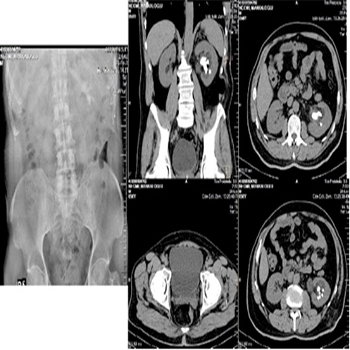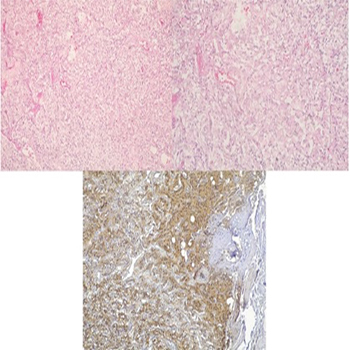Previous Issues Volume 1, Issue 1 - 2017
A Rare Tumor of Urinary Tract: Paraganglioma of Bladder
Selcuk Sarikaya1, Ridvan Ozbek2, Esma Gurbuz3,Cagri Senocak2,Gulcin Simsek3,Omer Faruk Bozkurt2
Corresponding Author: Selcuk Sarikaya, Gulhane Research and Training Hospital, Department of Urology, General Tevfik Saglam Caddesi, Etlik – Ankara / Turkey, Tel: +905316274819; Email:[email protected]
Received Date: 21 Aug 2017 Accepted Date: 22 Aug 2017 Published Date: 25 Aug 2017
Copyright © 2017 Sarikaya S
Citation: Sarikaya S, Özbek R, Senocak C and Bozkurt ÖF,(2017). A Complex Clinical Case with Retroperitoneal Fibrosis. Mathews J Urol Nephrol 1(1): 002.
INTRODUCTION
Paraganglioma is a rare tumor of the urinary bladder [1]. The most affected organ is bladder in the urinary system. It accounts for about 0.5% of all bladder tumors. These tumors are mostly with benign but it would be malignant by 15-20%. Paraganglioma would be safely treated with surgical approach [2]. In this study, we aimed to present a case of bladder paraganglioma that stone operation was planned but incidentally detected during percutaneous nephrolithotomy for renal stone.
CASE REPORT
A 57-year-old male patient was admitted to our clinic with left flank pain that was lasting for approximately 6 months. The biochemical analysis and urinalysis were normal. In the computerized tomography(CT) of the patient; there was 30 * 33 mm hemistaghorn stone in left kidney pelvis extending to the lower pole with a hyperdense appearance consistent with the stone enlarged in the middle and lower pelvis of the left kidney with 10mm diameter. There was mild dilatation in the upper urinary tract (Figure 1) Left percutaneous nephrolithotomy operation was planned for the patient Before the operation, cystoscopy was performed for the insertion of a ureteral catheter.
Figure 1:Computerised tomography(CT): Stones on left kidney.
A 1.5cm-diameter solid lesion with a polypoid appearance was observed on the left ureteral orifice of the bladder and the lesion was resected. The percutaneous nephrolithotomy operation was postponed. The patient's pathology was reported as paraganglioma. In addition, positive staining with S100 and negative staining with PanCK were detected (Figure 2). On the postoperative 2nd month, left percutaneous nephrolithotomy for left kidney stone was performed. A double J catheter was inserted. There were residual stones after operation and an additional operation was planned for residual stones.
Figure 2: Microscopic view of paraganglioma(S-100 +, PanCK -).
DISCUSSION
Paraganglioma is a rare tumor of the bladder, derives from chromaffin cells and can cause symptoms such as painless gross hematuria, paroxysmal hypertension, headache during or after urinating and blurred vision attacks due to the catecholamine secretion. While no symptoms were observed in our case, it was detected incidentally before the stone operation and the patient was taken to the follow-up program after the operation.
REFERENCES
- Zhai H, Ma X, Nie W, Li H, et al. (2017). Paraganglioma of the Urinary Bladder: A Series of 22 Cases in a Single Center. Clin Genitourin Cancer. S1558-7673(17): 30072-1.
- Amaike T, Tamura T, Koga A, Shibao K, et al. (2017). A Case of Retroperitoneal Paraganglioma. J UOEH. 39(2): 161- 166.
- Huang CJ, Lee CH, Chang YH and Won JG. ( 2017). Paravesical (urachal) paraganglioma (PGL) presenting as hypertensive crisis during micturition, mimicking bladder PGL. J Formos Med Assoc. pii: S0929-6646(17): 30233-4.

